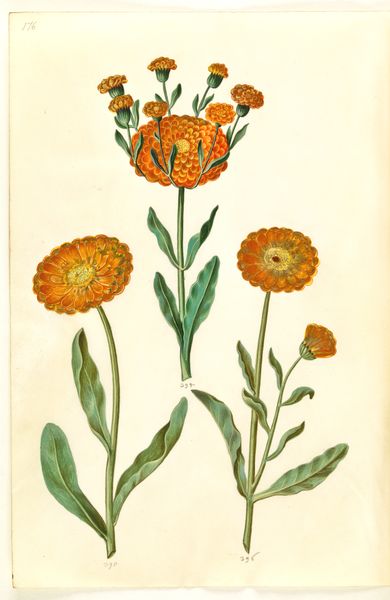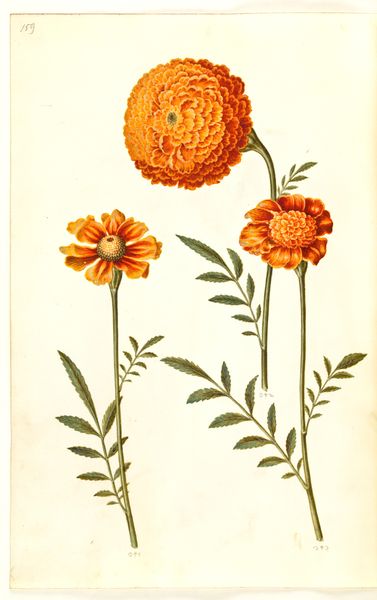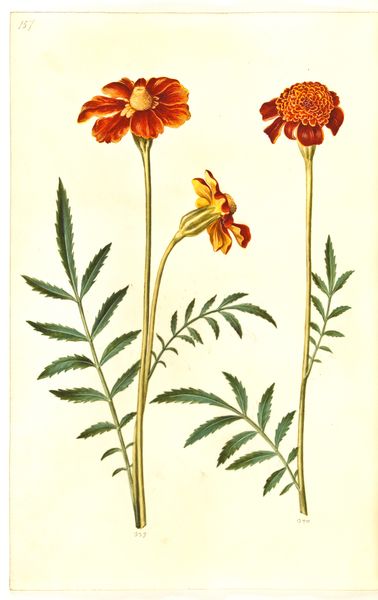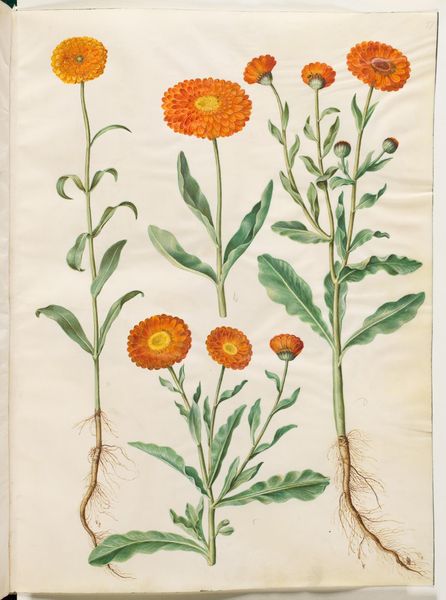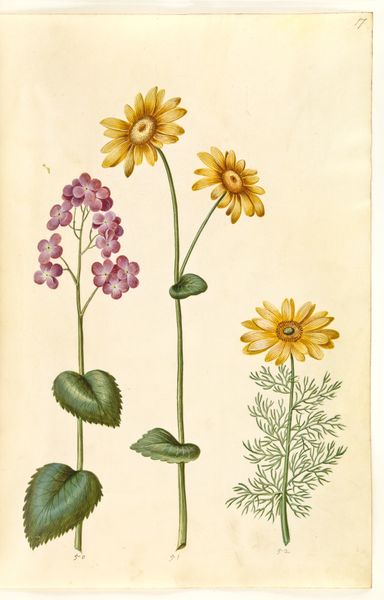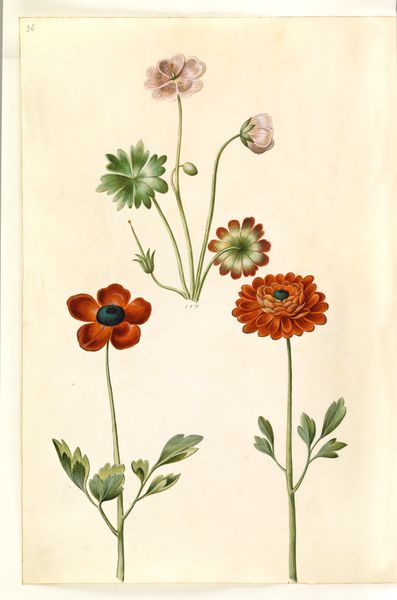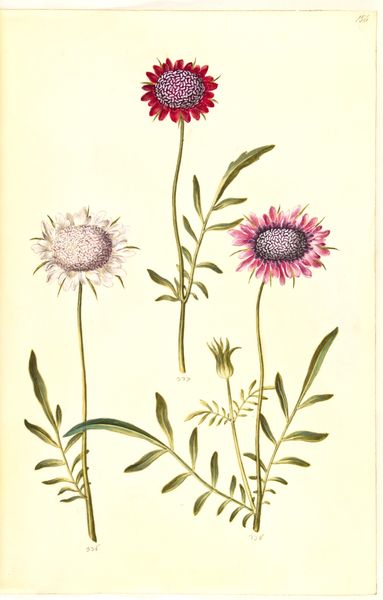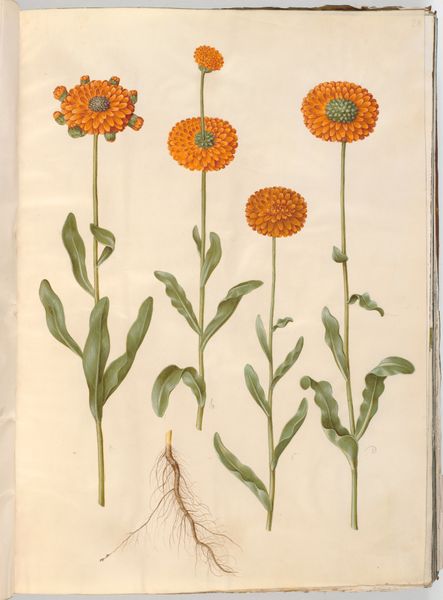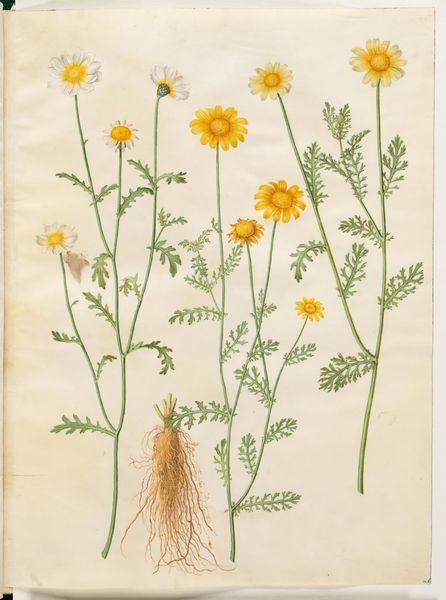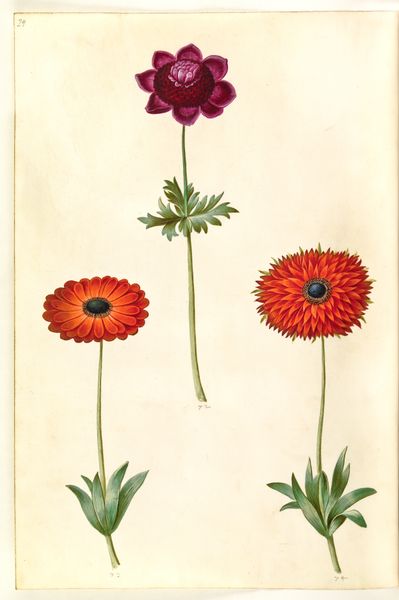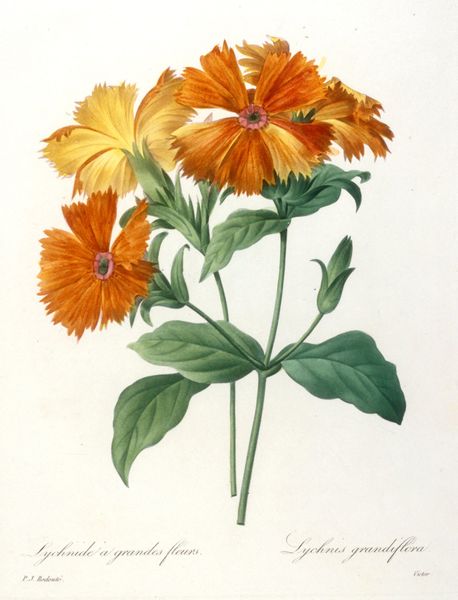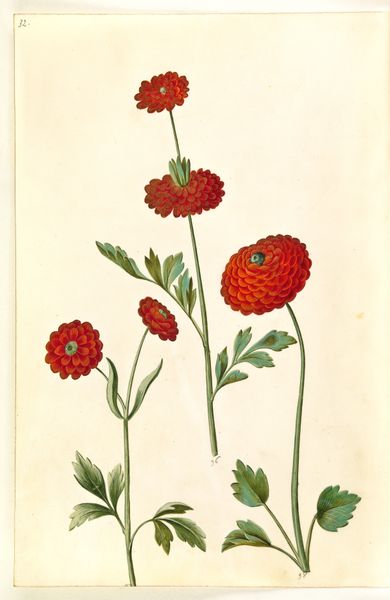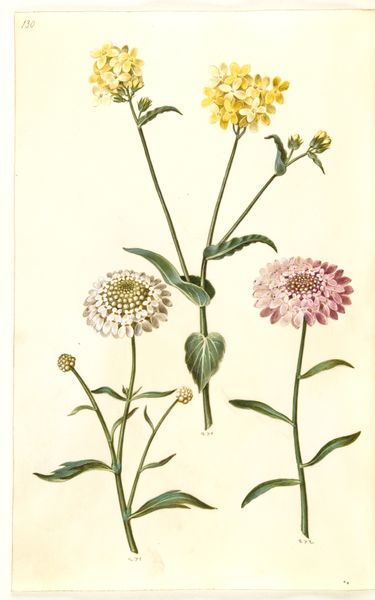
Tagetes patula (udspærret fløjlsblomst) 1635 - 1664
0:00
0:00
drawing, gouache
#
drawing
#
gouache
#
intimism
#
botanical drawing
#
botanical art
Dimensions: 375 mm (height) x 265 mm (width) x 85 mm (depth) (monteringsmaal), 358 mm (height) x 250 mm (width) (bladmaal)
Editor: Here we have Hans Simon Holtzbecker’s "Tagetes patula", or French Marigold, created sometime between 1635 and 1664. It’s a lovely botanical drawing done in gouache. The meticulous detail really strikes me. What catches your eye about it? Curator: Well, let's consider the material reality of this image. Holtzbecker's choice of gouache allows for a level of opacity and layering not possible with watercolor, think about where the pigments came from. What dyes created the vibrancy in those marigold blossoms, and who was involved in that processing? This level of detail speaks to the social and economic conditions that facilitated its production. Editor: So you’re saying the materials themselves tell a story beyond just the visual representation of the flower? Curator: Precisely! The production of art is never divorced from labor. Who ground the pigments, who prepared the vellum? And to what end was this drawing commissioned; as botanical record keeping, decoration, a symbol of wealth? Each decision has roots in economic and social structures. Editor: That’s fascinating, I hadn't considered the economic impact surrounding a piece like this. Curator: Furthermore, consider the consumption of this image. Botanical illustrations often served a practical purpose in identifying medicinal plants, for example. Did this one function as such? Think of who owned this, used it, and its lifecycle as a valuable material commodity. Editor: That completely changes my perspective. Now I see it less as just a pretty flower picture and more as a record of production and use within a specific society. Thanks for this interesting insight! Curator: And I have come to appreciate your observation on the “lovely” details. Indeed, such precision might denote a specialized market for detailed, even scientific, artistic labors at the time.
Comments
No comments
Be the first to comment and join the conversation on the ultimate creative platform.
